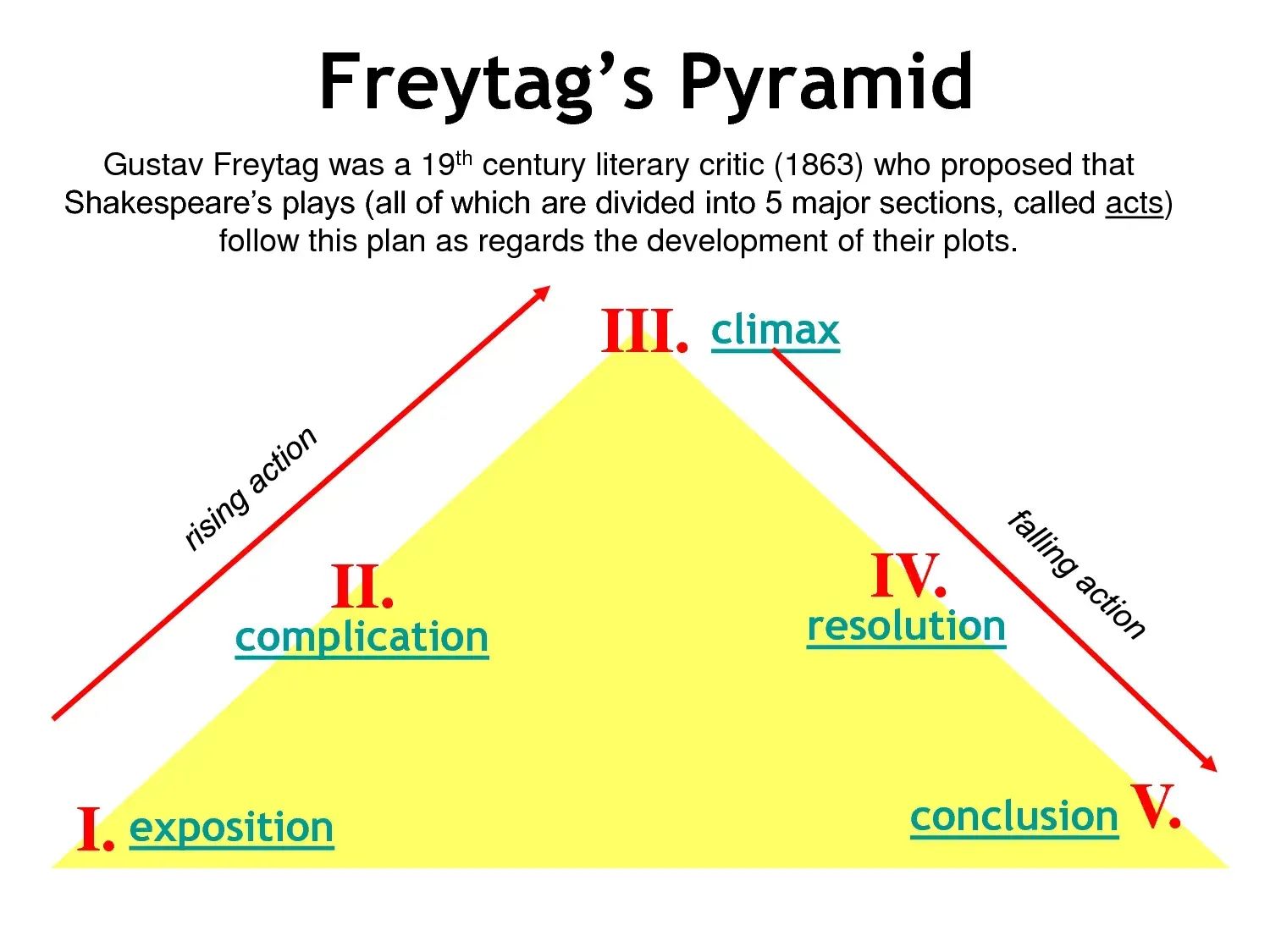The Biblical Story Follows a Similar Plot Structure to What you Read in Literature
Dr. Chris Stroble / Published August 20, 2025
School is back in session and in your English class, you will read this year, or you have read short stories (The Most Dangerous Game), novels (To Kill a Mockingbird), and plays (Romeo & Juliet, Julius Ceasar, and A Raisin in the Sun). All of these pieces of literature follow a plot structure that includes the exposition, rising action, climax, falling action, resolution/denouement. The biblical story--one long epic and complicated story of God's covenant/promise relationship with Isreal and all of humanity (you)-- follows a similar plot structure.
Plot Structure
The plot structure includes:
- Exposition –Here you learn about the setting (where the story takes place) and the characters. In plays this is the opening Act I.
- Conflict/Inciting Incident– This introduces the central conflict. The conflict might be internal, external, or both. In plays you also learn this in Act I.
- Rising Action – This includes events that complicate the conflict/problem; authors include elements like foreshadowing and suspense. In plays the rising actions happens in Act II.
- Climax - The turning point. The point of no return. Things cannot go back to the way things were. In plays the climax occurs in Act III.
- Falling Action – The events that follow the climax. The aftermath. In plays, the falling action occurs in Act IV.
- Resolution/Denouement – This is a sense of closure. Is it a "happily ever after" story or a tragedy with a tragic ending (like Shakespeare's Tragedy of Julius Caesar)?

The Biblical Story – Similar Plot Structure
The biblical story--one long epic story of God's covenant/promise relationship with Isreal and all of humanity (you)--, follows a similar plot structure, with exposition, inciting incident, rising action, falling action, climax, and resolution/denouement. This one long epic story consists of 66 books in the Bible. The first 39 books are known as the Old Testament; the last 27 books are the called the New Testament.
Old Testament (the first 39 books of the Bible)
The Old Testament (provides core themes, plot conflicts, and design patterns) in 3 Acts:
- Genesis 1-11 is about God and humanity (think of characters, setting, conflict/inciting incident- Act I).
- Genesis 12- 2 Kings is about God and Israel and develops the pattern of Act I (think of complications and rising action, Act II).
- The Prophets & Poets (think rising action, Act III).
The Bible Project notes that the Old Testament ends in anticipation of another "Act" in the New Testament, and the New Testament (the last 27 books of the Bible) is the same story--carried forward in Jesus.
The New Testament includes the climax/turning point (The Resurrection of Jesus), falling action (learning how to live as Christians/followers of Jesus Christ and lead others to Christ), and the resolution/denouement (a redemptive story--we can be redeemed and have a way back into right relationship with God).
Connect What You are Learning in English
This year in English class, as you study plot structure and read short stories (The Most Dangerous Game), novels (To Kill A Mockingbird), and plays (Romeo & Juliet, Julius Ceasar, and A Raisin in the Sun), remember that the biblical story --one long epic and complicated story of God's covenant/promise relationship with Isreal and all mankind (you)-- follows a similar plot structure. This plot structure includes the exposition (setting, characters), conflict/inciting incident, rising action, climax, falling action, and resolution/denouement.
It is important to know the biblical story, for practical reasons, spiritual reasons, and because there are so many allusions to people, places, and events from the biblical story in all the literature you read.
Learn the Biblical Story: Crawl Before You Walk
Challenge yourself to learn the biblical story. Crawl before you walk. Don't press the gas full force. Start by simply viewing these two short videos from The Bible Project.
- 12-minute video of The Old Testament (the first 39 books of the Bible) and an
- 8-minute video of The New Testament Overview (the last 27 books of the Bible).
Continue learning this school year! As you study plot structure in literature in your English class, remember that the biblical story—one long, epic, complicated story of God's covenant/promise relationship with Israel and humanity—follows a similar plot structure from the exposition (characters and setting) to the resolution/denouement (a sense of closure).
Always in your corner,
Dr. Chris
